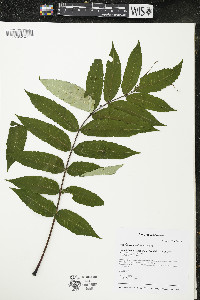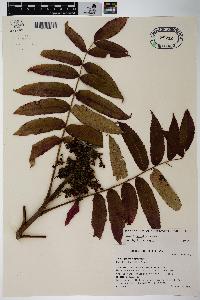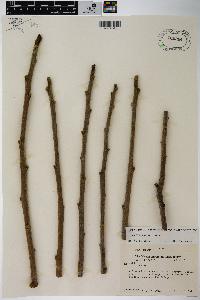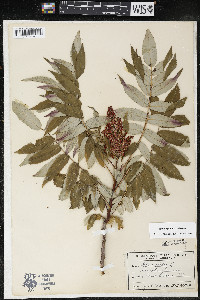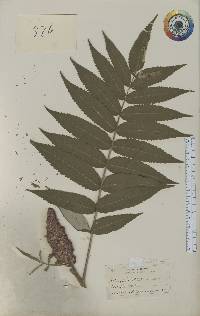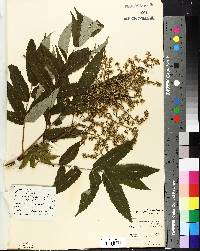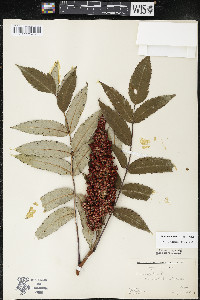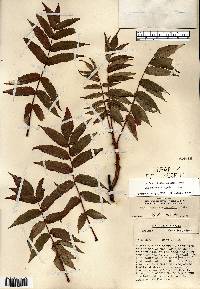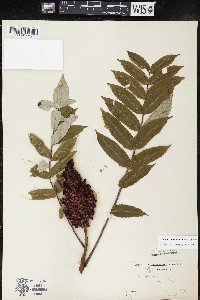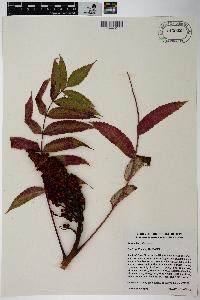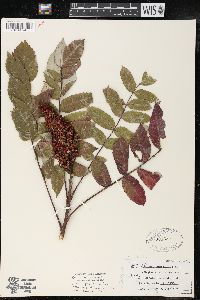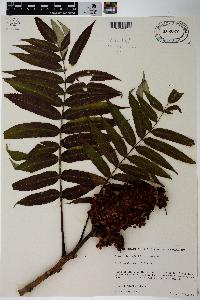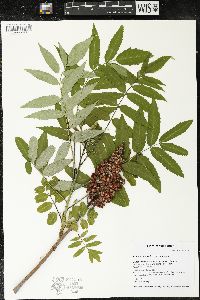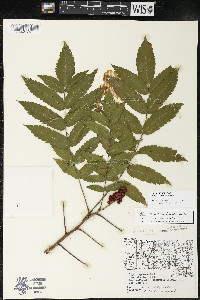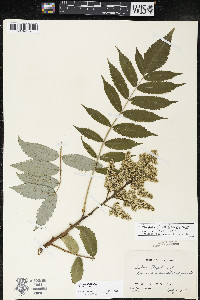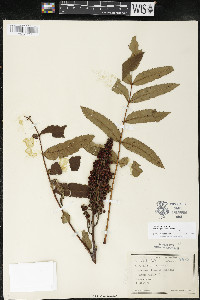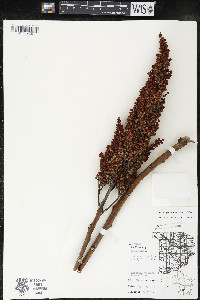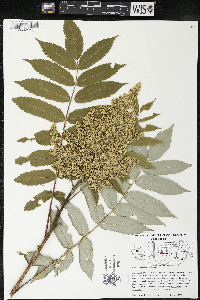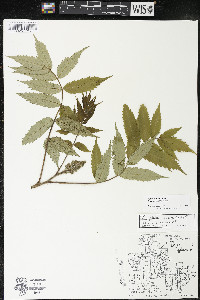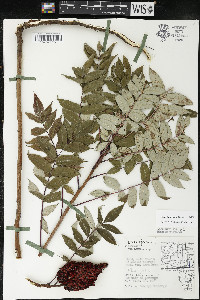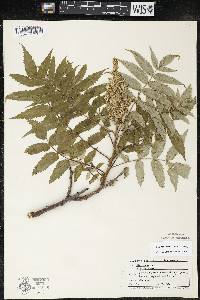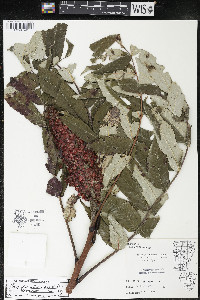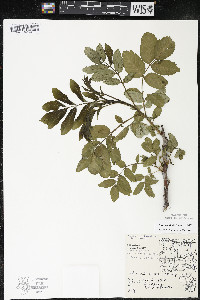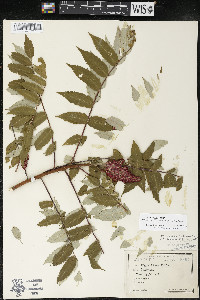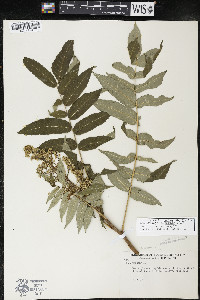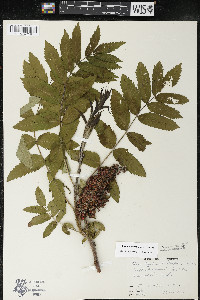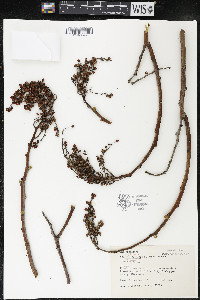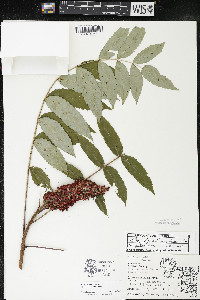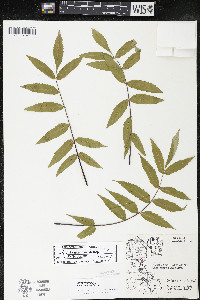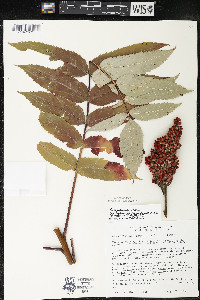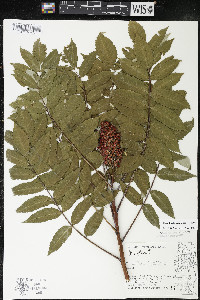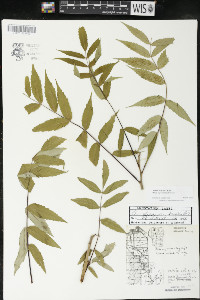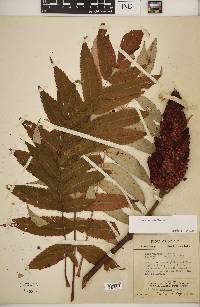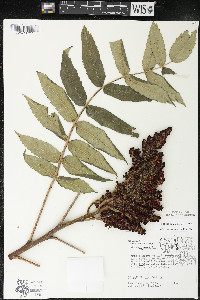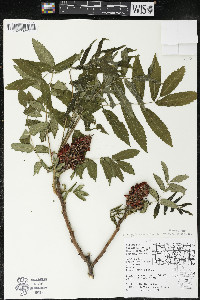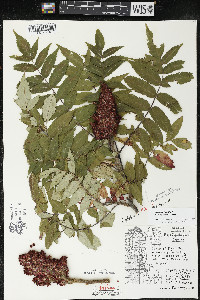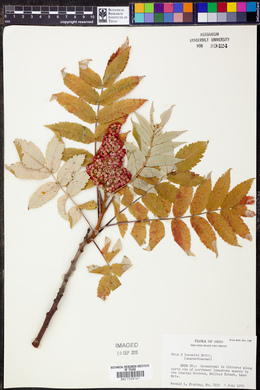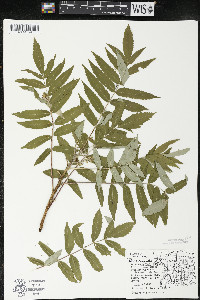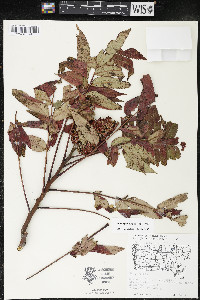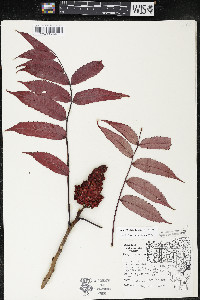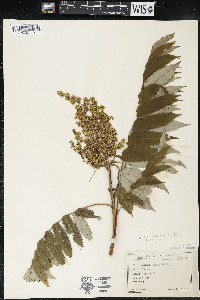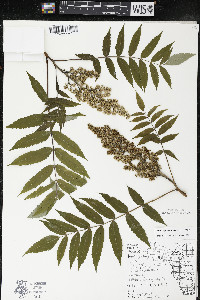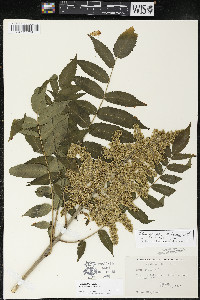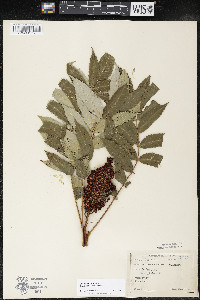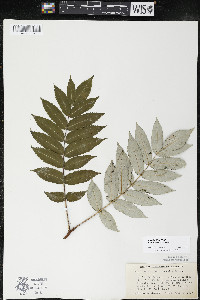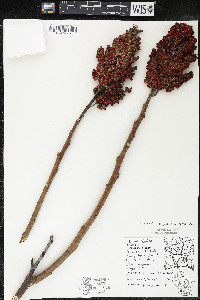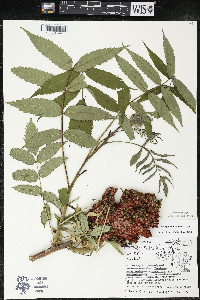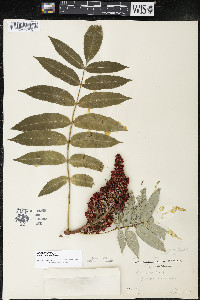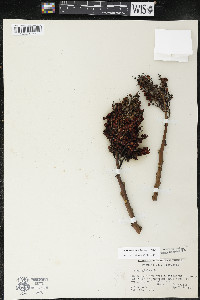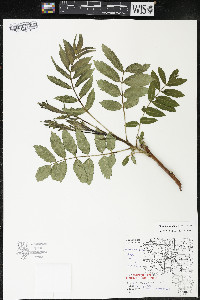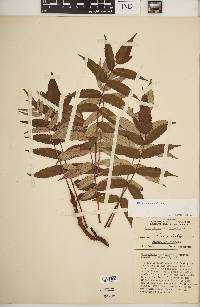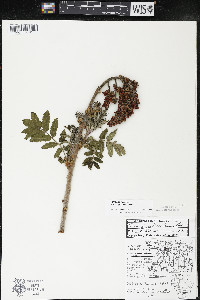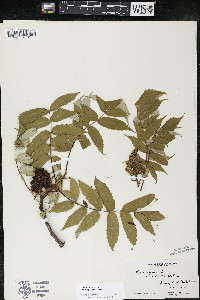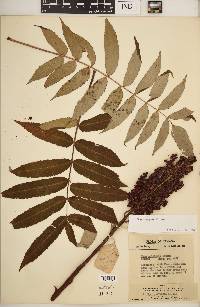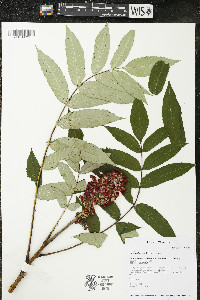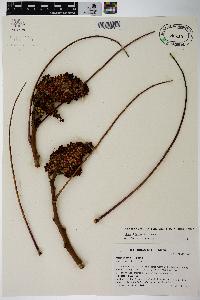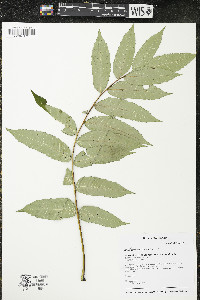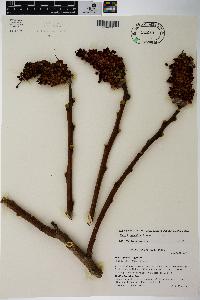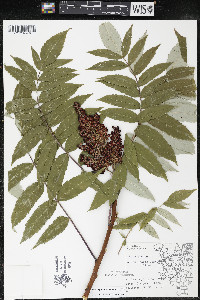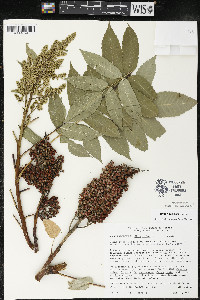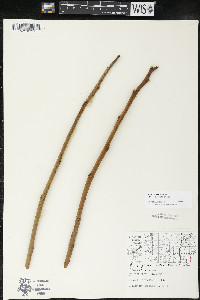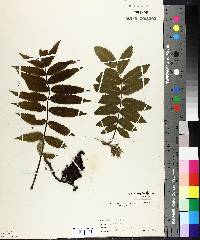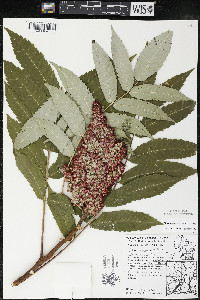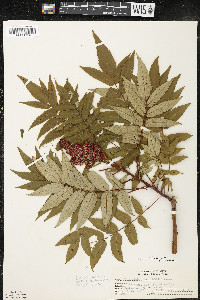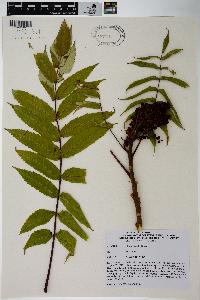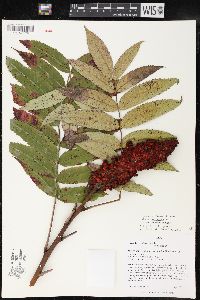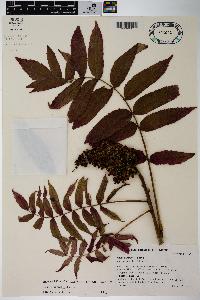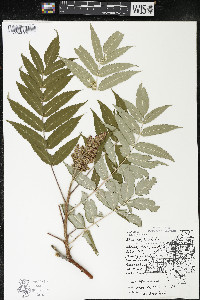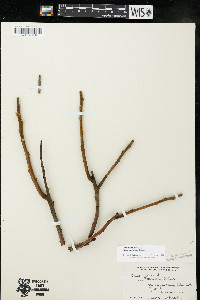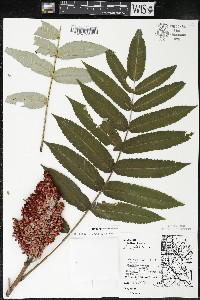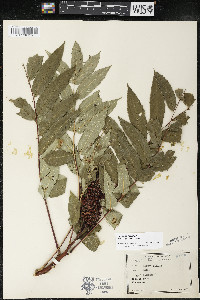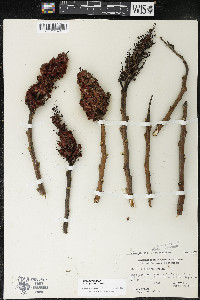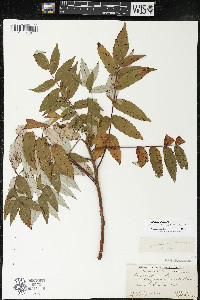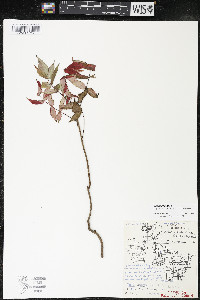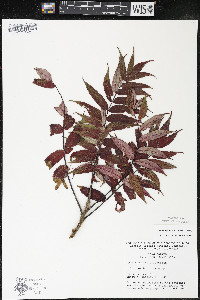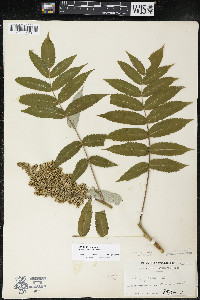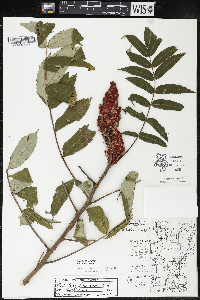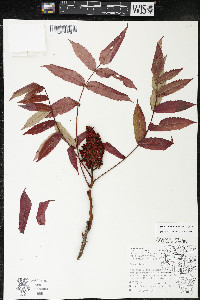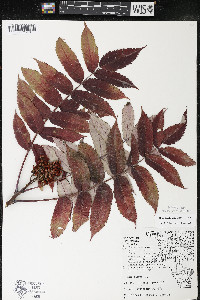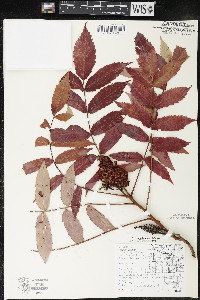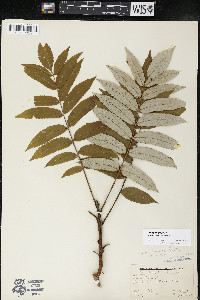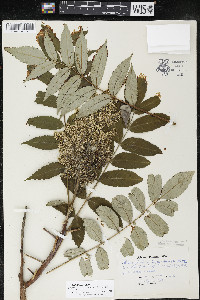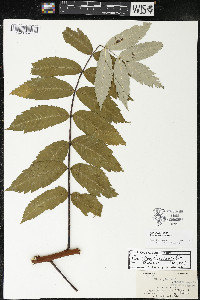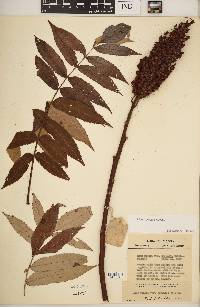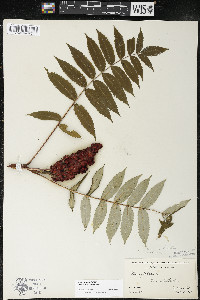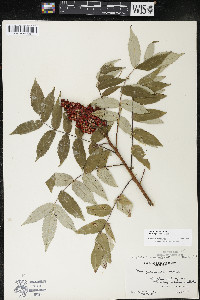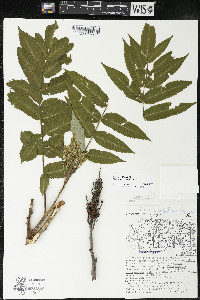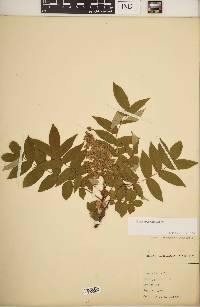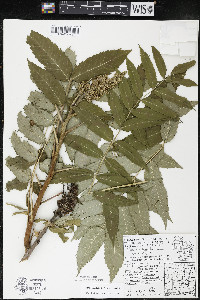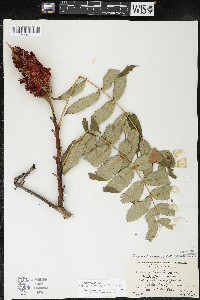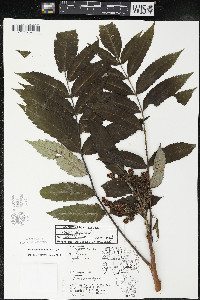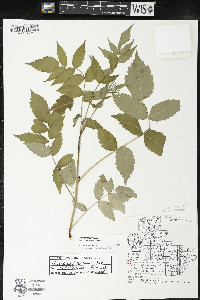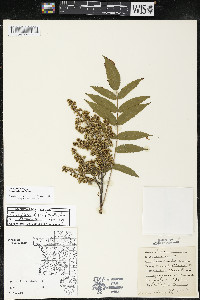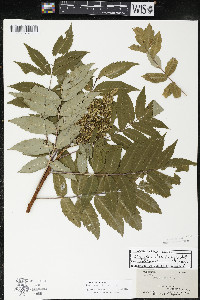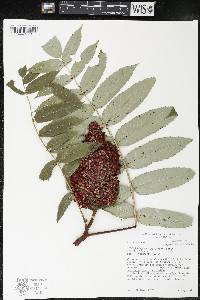Rhus × borealis
|
|
|
|
Family: Anacardiaceae
Northern Sumac
[Rhus borealis Greene, moreRhus pulvinata Greene, Rhus x pulvinata Greene (pro sp.)] |
Small tree or large shrub Leaves: alternate, pinnately compound, 20 cm - 0.6 m long, with nine to 31 leaflets. The leaf stalk is stout, 3 - 10 cm long, variably hairy, enclosing the bud with its enlarged base. Flowers: either male or female, borne on separate plants (dioecious), sometimes with unisexual and bisexual flowers (polygamous). Tiny, yellowish green flowers are borne on a terminal, branched inflorescence (panicle) to 30 cm long. Fruit: fleshy with a center stone (drupe), borne in dense upright clusters, bright red, 3 - 5 mm across, persisting into winter. Red, 0.5 mm - 2 mm long, partly needle-like, partly club-shaped hairs cover each fruit. Bark: brown to gray, smooth. Leaflets: very short-stalked (terminal leaflet stalk longest), 5 - 12 cm long (middle leaflets longest), 1.5 - 3.5 cm wide, lance-shaped to oblong with a long pointed tip, toothed (sometimes few). Form: rounded to flat-topped, forming colonies from root sprouts. Twig: stout, variably (usually sparsely) and softly hairy, exuding a milky yellowish sap when cut. The horseshoe- to C-shaped leafscar almost encloses the bud and has three bundle scars. Similar species: Rhus × pulvinata is a hybrid between Rhus typhina and Rhus glabra. Its characteristics are intermediate of the two parents and is quite difficult to identify without the fruit. Rhus typhina has very hairy twigs and only red needle-like hairs (2 mm long or longer) on its fruit. Rhus glabra has hairless twigs and only warty to club-like hairs (less than 0.5 mm long) on its fruit. Rhus copallina is also similar, but the leaf stalk is winged between the leaflets. Toxicodendron vernix differs by its white fruit and non-toothed leaves. Flowering: June to July Habitat and ecology: This hybrid is probably more common in the Chicago Region than most believe. It is found along railroads, roadsides or other locations where both parents occur. Occurence in the Chicago region: native Notes: Some botanists call the hybrids that are mostly hairless R. x borealis and those that are densely hairy R. x pulvinata. Etymology: Rhus is the Greek name for a species of sumac. Pulvinata means cushion-like. Author: The Morton Arboretum From Flora of Indiana (1940) by Charles C. Deam Barkley discusses the status of this hybrid [under R. × pulvinata] in Amer. Midland Nat. 19:589-599. 1938. He has referred my [Deam] nos. 58424B, 58534A, 58354B, and 58534L to this hybrid. He refers also to it, specimens which I collected in Fulton County and some that Nieuwland collected in St. Joseph County. Doubtless this hybrid is sporadic within the range of the parent species. [Also,] Barkley (Amer. Midland Nat. 19: 598-599. 1938) has tentatively referred my specimens nos. 58424A, 58427, 58544L, 58544M, 58544N to this variety [R. glabra var. borealis]. These were collected along the roadside about 3 miles northwest of Angola, Steuben County, with Rhus glabra, Rhus typhina and × Rhus pulvinata. …… Indiana Coefficient of Conservatism: C = 1 Wetland Indicator Status: N/A
|


